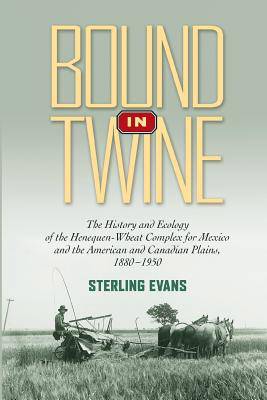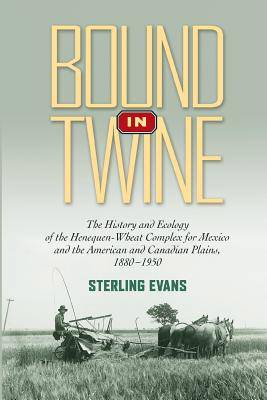
- Afhalen na 1 uur in een winkel met voorraad
- Gratis thuislevering in België vanaf € 30
- Ruim aanbod met 7 miljoen producten
- Afhalen na 1 uur in een winkel met voorraad
- Gratis thuislevering in België vanaf € 30
- Ruim aanbod met 7 miljoen producten
Zoeken
Bound in Twine
The History and Ecology of the Henequen-Wheat Complex for Mexico and the American and Canadian Plains, 1880-1950
Sterling Evans
€ 46,45
+ 92 punten
Omschrijving
Before the invention of the combine, the binder was an essential harvesting implement that cut grain and bound the stalks in bundles tied with twine that could then be hand-gathered into shocks for threshing. Hundreds of thousands of farmers across the United States and Canada relied on binders and the twine required for the machine's operation. Implement manufacturers discovered that the best binder twine was made from henequen and sisal-spiny, fibrous plants native to the Yucatán Peninsula of Mexico. The double dependency that subsequently developed between Mexico and the Great Plains of the United States and Canada affected the agriculture, ecology, and economy of all three nations in ways that have historically been little understood. These interlocking dependencies-identified by author Sterling Evans as the "henequen-wheat complex"-initiated or furthered major ecological, social, and political changes in each of these agricultural regions. Drawing on extensive archival work as well as the existing secondary literature, Evans has woven an intricate story that will change our understanding of the complex, transnational history of the North American continent. STERLING EVANS is an associate professor and Canada Research Chair in history at Brandon University in Brandon, Manitoba. He is the editor of The Borderlands of the American and Canadian Wests. Evans holds a Ph.D. from the University of Kansas.
Specificaties
Betrokkenen
- Auteur(s):
- Uitgeverij:
Inhoud
- Aantal bladzijden:
- 334
- Taal:
- Engels
- Reeks:
- Reeksnummer:
- nr. 21
Eigenschappen
- Productcode (EAN):
- 9781623490478
- Verschijningsdatum:
- 14/01/2013
- Uitvoering:
- Paperback
- Formaat:
- Trade paperback (VS)
- Afmetingen:
- 152 mm x 229 mm
- Gewicht:
- 503 g

Alleen bij Standaard Boekhandel
+ 92 punten op je klantenkaart van Standaard Boekhandel
Beoordelingen
We publiceren alleen reviews die voldoen aan de voorwaarden voor reviews. Bekijk onze voorwaarden voor reviews.











